|
Alternative to
Corning 9780 for Infrared
Luminescence Imaging
Andrew Davidhazy School of Photography Rochester Institute of Technology Rochester, NY Among applications related to infrared photography those connected with reflected infrared are well known and widely practiced. Additionally, reflected infrared imaging is rather easily accomplished by the expedient of placing an infrared transmitting, visible blocking, infrared filter over the camera lens and recording on some material sensitive to infrared radiation. This method is used in a number of forensic, medical and ecological situations where it is desired to compare the infrared reflectance (or transmittance) of subjects to their appearance under visible, white, light. A special case of infrared imaging is that of luminescence or fluorescence in the infrared. This technique is based on the fact that certain materials transform visible incident light wavelengths into longer, invisible, infrared wavelengths. It is a process similar to that whereby visible fluorescence is excited in certain materials by illuminating the subject with ultraviolet radiation. In order to detect and record the transformation of visible radiation into emitted infrared radiation the approach taken is to illuminate the subject of interest with light devoid of infrared and then record the subject though an infrared-only passing filter onto the infrared sensitive detector, sensor or film. The method by which white light has generally been modified so that it contains no infrared has been to place an infrared blocking (but light passing) filter over the source of illumination. This has generally been tungsten or electronic flash sources. Both are very rich in infrared. The filter that is generally recommended for this purpose is the Corning 9788 or Corning 9780. These are usually expensive and both are cyan-green in color and are much more effective than some “heat absorbing” or “hot mirror” filters that seem to have similar properties. One approach that is seldom mentioned is that of using a light source that inherently has very low to no infrared emission to begin with. A source like this negates the need for the often hard to find and costly Corning filter. Yet sources like this are all around us. They are the common fluorescent lamps. A fluorescent lamp has very low (if any at all) infrared emission. Why one might ask. Partly it is because such emission is not needed by our eyes to perceive our environment. If not needed (since we can’t see infrared, why make the lamps emit it? So they don’t. Below is the typical spectral transmission of the 9788 and 9780 filter. Next to it is the approximate idealized or simplified spectral emission of a “generic” fluorescent tube. 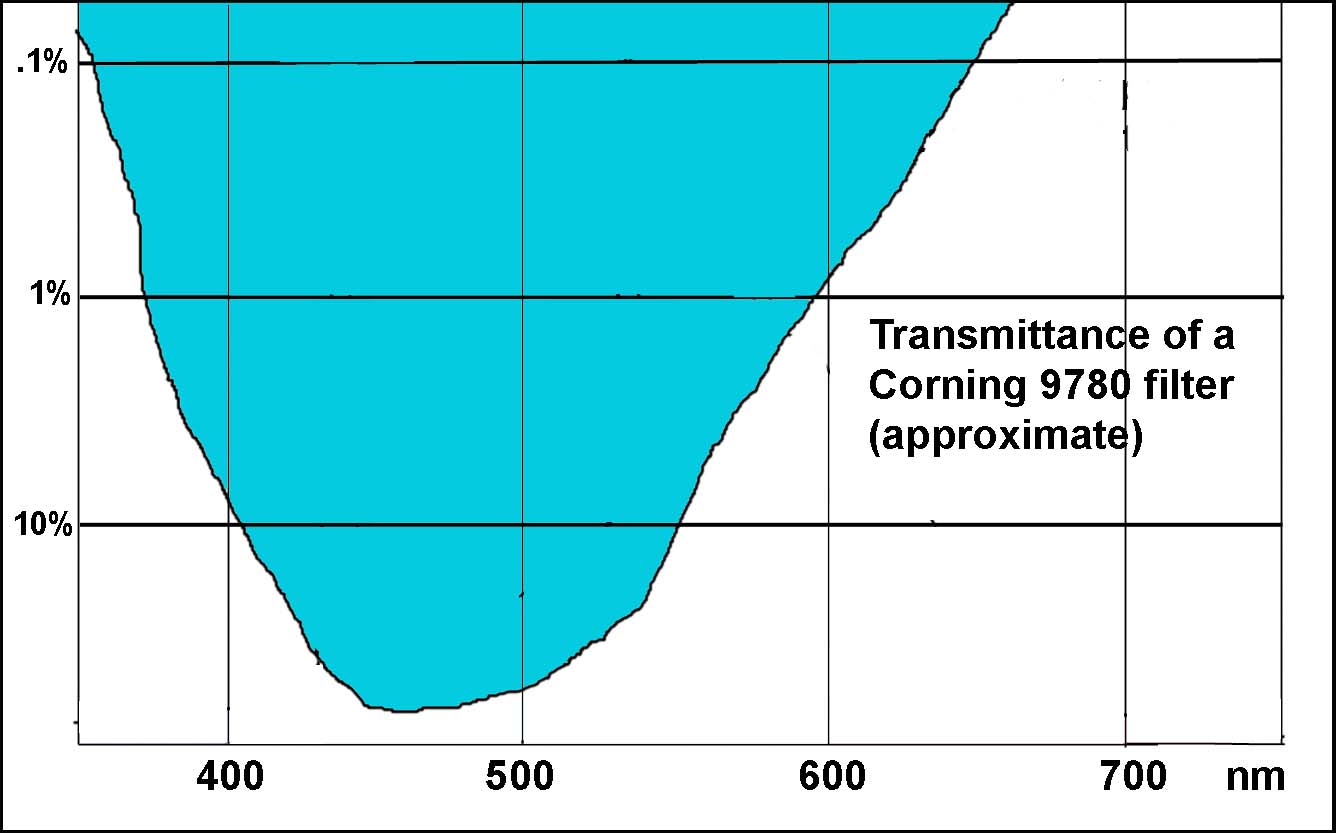
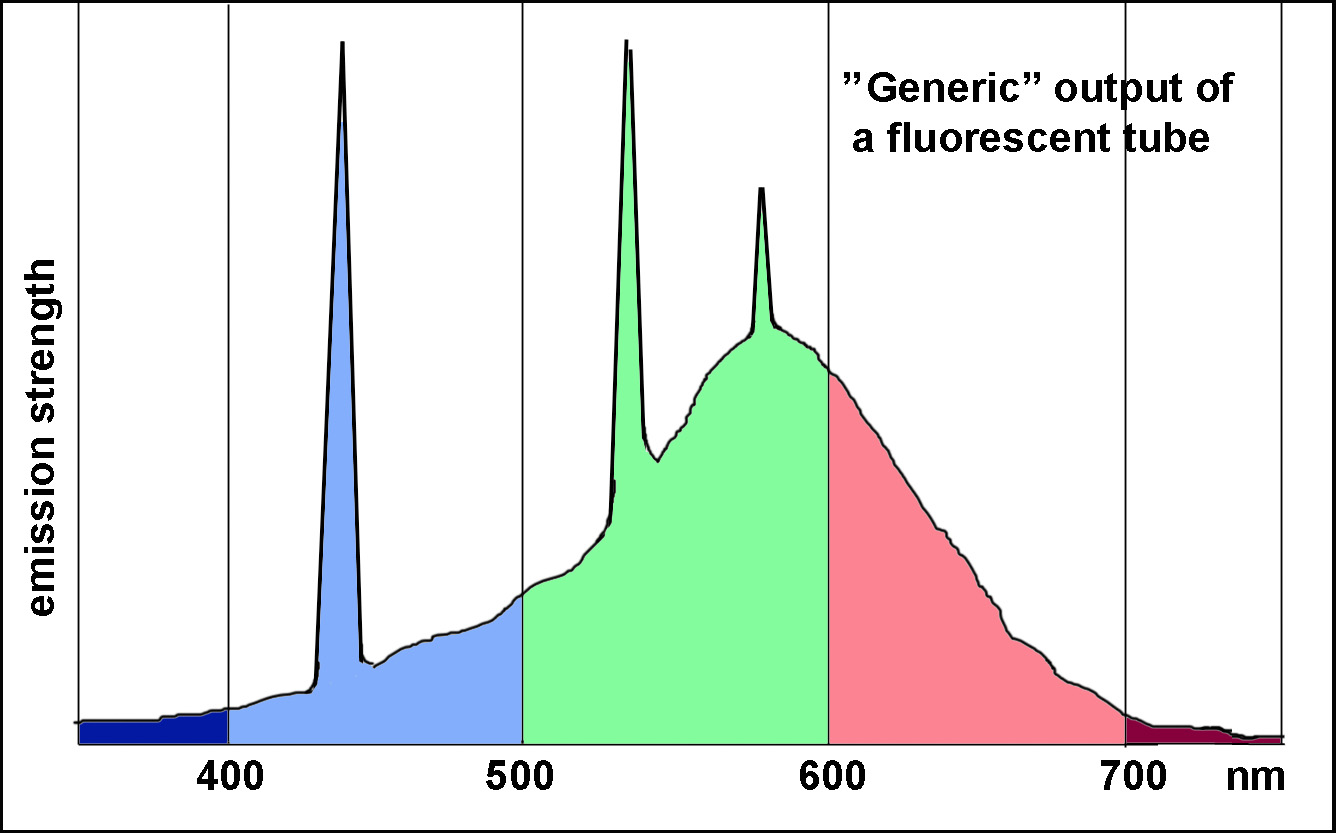 When the 9780 or 9788 is used over a broad spectrum tungsten lamp (rich in infrared) hardly any infrared gets through. When the fluorescent tube illuminates a sample hardly any infrared falls on it because the tube does not emit any. In both cases no infrared falls on the sample subject. Imaging the subject under such conditions through an infrared transmitting filter would result in no image at all being recorded if infrared was not present in the radiation reaching the filter from the subject. This would be the case if the subject did not cause some of the incident visible radiation to shift in wavelength and reappear as longer, invisible, infrared radiation. This shifting is generally called “luminescence” or fluorescence in the infrared. Luminescence is an investigative technique particularly suitable for document examination in forensic situations especially when inks are being compared and when washed out lettering makes reading a document difficult. It is a technique that usually reverses the tonal composition of a subject. Objects that may be dark in an original, such as ink, but which even in minute quantities (such as might be the case in very faded or washed out writing) luminesce, will record as light in tone against a dark non-luminescing white paper background. 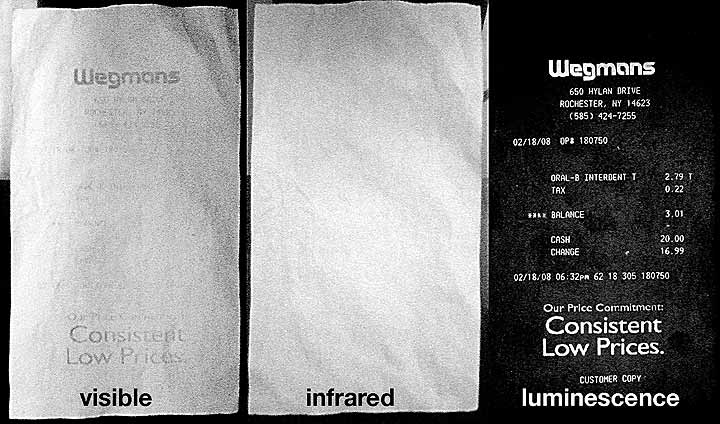
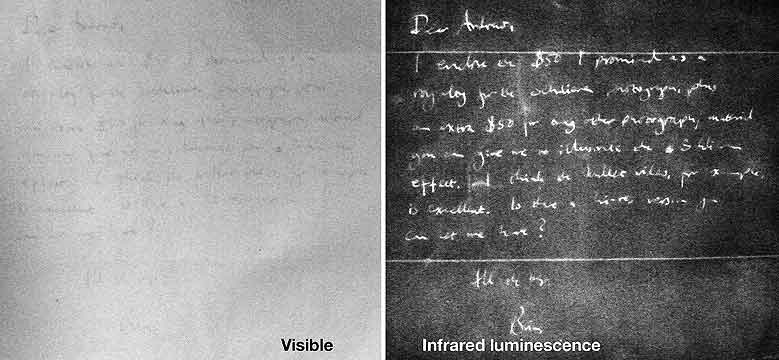
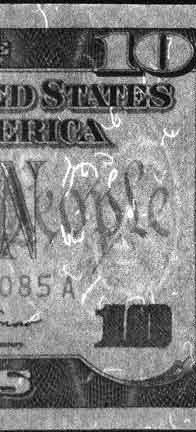
These are three examples where luminescence was useful as a technique to “bring back” faded documents and in the third case it makes plainly evident the invisible luminescing fibers embedded in paper currency. All that needs to be done is to light the subject to be examined with (most) fluorescent lamps and photograph through an infrared filter such as the Wratten 70, 87, 87C, etc. and if the subject luminesces a record of this invisible emission will be recorded. Good luck! If
you found this of interest feel free to drop me a line! Andrew Davidhazy, andpph@davidhazy.org
|